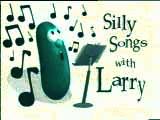
A Media Literacy & Writing
Lesson With "A-Peel."

By: Nikki Leggins & Angela Rogers
Audience:
-
This activity is geared for fourth, fifth, and sixth
graders.
-
Learner characteristics - Our students are from a
rural community, but have access to mass media through television, radio,
magazines, newspapers, movies, and computers.
-
Competencies - We expect our students to pay attention,
discuss and respect each other's ideas among groups, remain on task, and
be creative.
Objectives:
Writing Skills:
4th Grade: Composing Process:
Writes imaginative and personal narratives that have a coherent, logical,
and organized structure.
5th Grade: Composing Process:
Writes descriptions that provide sufficent, related information to provide
an overall impression of
view.
6th Grade: Composing Process:
Uses concrete images and vivid descriptions in expository (clarification)
writing.
Information Skills:
Goal 1: The learner will experience a wide variety of reading, listening,
and viewing resources to interact with
ideas in an information-intensive environment.
Objective 1.1- The learner will explore reading, listening, viewing sources
and formats.
Focus:
-
Acknowledge ownership of ideas in
a variety of formats
-
Identify elements of composition
-
Identify characteristics of various
media formats
-
Investigate potential sources of information
outside the school
-
Select and use sources and formats
independently
Activity/Lesson:
1. Discuss the importance of the audience to a writer.
-
How does the writer influence the audience?
-
What types of decisions can a writer make for their audience??
-
Why is it important what the audience thinks?

2. Show the students a video clip to emphasize the audience's
importance.
3. Discuss the characteristics of narrative writing.
-
Where can you find examples of narrative writing in everyday life?
4. Show the students a video clip with the sound turned off and have
them create their own narrative dialogues in groups, practicing what has
been discussed.
5. After completion of the dialogue, the class will view the clip
with the sound to compare the meanings that were constructed in the various
groups. Conclude with a discussion.
-
Why did you make the choices you did as a writer?
-
What influenced what you wrote?
-
Media Analysis: Media Literacy Key Concepts

1. All media are constructions. Media products are carefully crafted constructions,
the results of many decisions, conscious and unconscious.
-
The video clip chosen is carefully constructed for children.
2. The media are commercial entities. All media products are shaped, in
terms of both their form and their content, by commercial considerations.
-
The video clip chosen is directed towards children, and is shaped
towards their interests.
3. Media communicate values and ideology. All media products contain implicit
and explicit value messages and assumed truths about the nature of human
beings and the world in which we live.
-
The video clip chosen communicates values and ideas to the audience.
4. The media have social and political implications. The mass media have
the potential to affect out behavior as individuals and citizens in a variety
of ways.
5. Media forms are related to content. Different media represent reality
in different ways: the form of a given piece of media shapes the message
it sends.
-
Students will watch the video with no sound and then write their
own narrative writing piece about what they see.
6. The media have aesthetic qualities. Familiarity with the aesthetic dimensions
of media can lead to deeper understanding and greater enjoyments.
-
Students will become more familar with video equipment through the
viewing and making of video clips.
7. Audiences are involved in the process of creating meaning. What a viewer
makes of a piece of media depends on his or her past experiences, viewing
skill, and current state of mind.
-
Students will watch the video and write their own narrative for the video
clip.

Links:
-
Center for Media Literacy
- provides books, videos, and teaching materials; teacher training; and
national advocacy
for media literacy education.
-
Media Awareness - information
on commercial media for both parents and children.
-
Summit 2000 - children, youth
and the media beyond the millennium.
-
Center for Media Education - A
national
non-profit organization seeking to influence telecommunications policy
making in the public interest through research, advocacy, public education,
and press activities.
-
Media Literacy
Clearinghouse - a searchable compilation of media literacy resources.
-
Mega Media-Links - contains
thousands of film, video, radio, television, cinema and new-media site
listings conveniently categorized, sub-categorized and cross-referenced
with brief site descriptions.
-
What is Literacy?
-
Why Teach
Media Literacy?
-
The Maximum Veggie-Tales
Page - a site for Veggie-Tales fans.
-
The Bryan's Veggie Tales Page
- tons of cool Veggie Tales stuff, including over 15 MB of sound clips.



